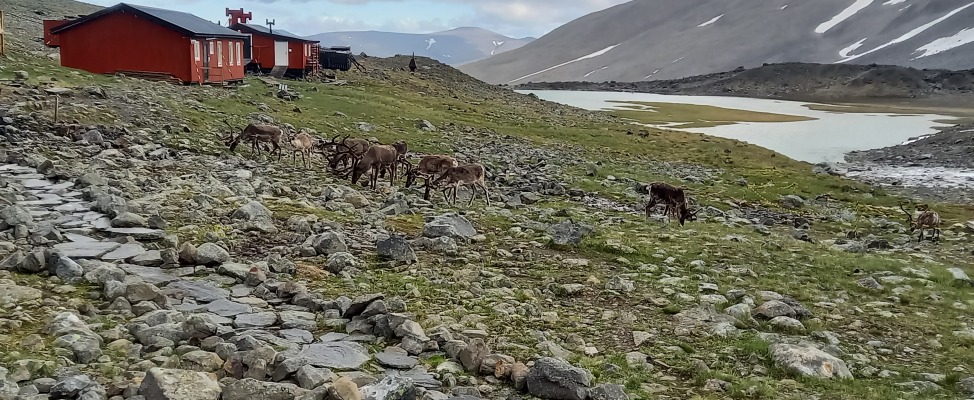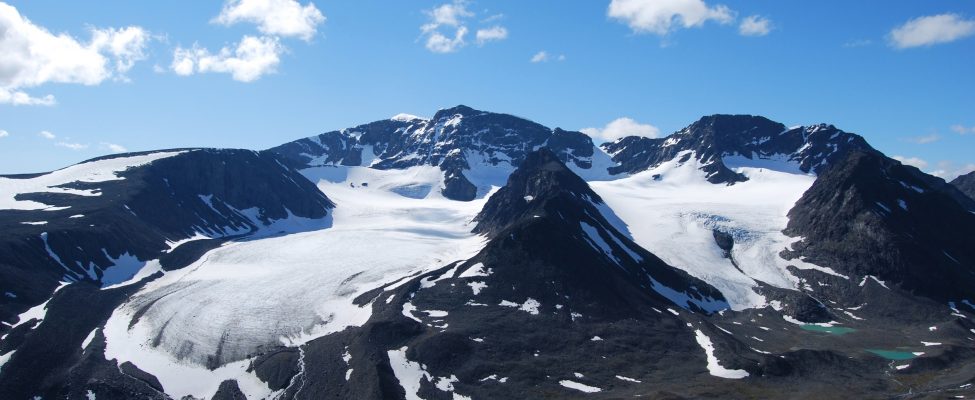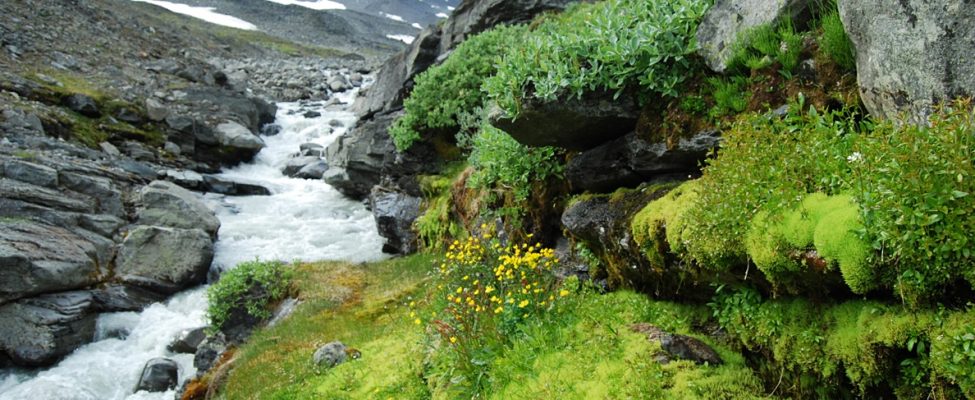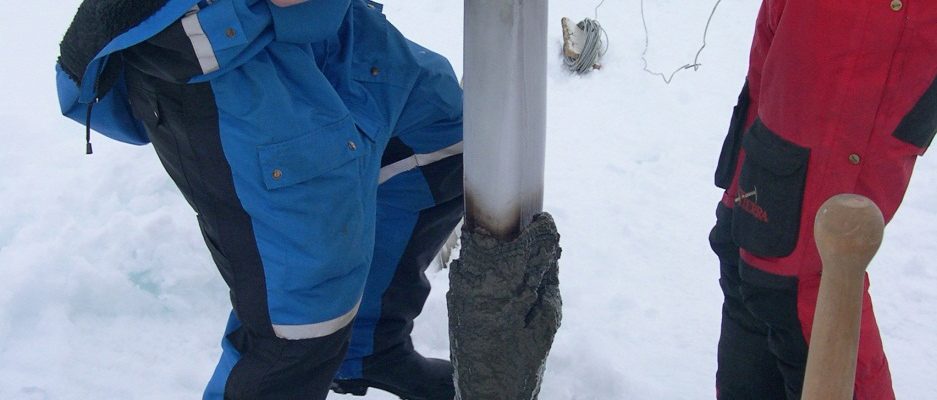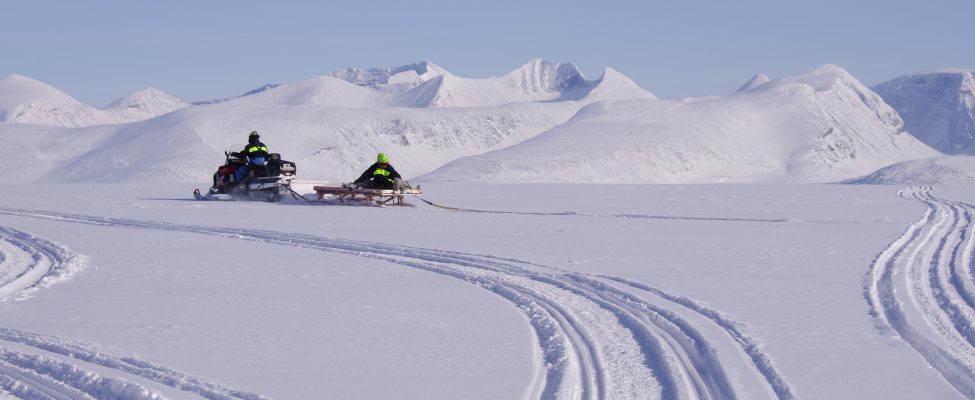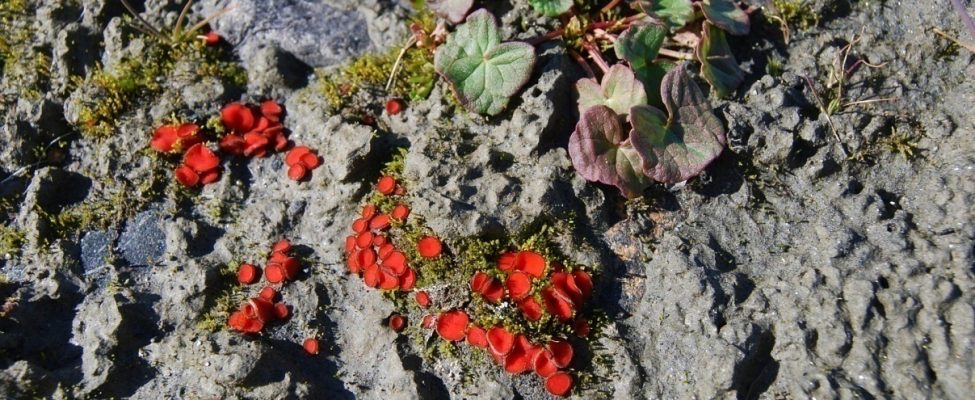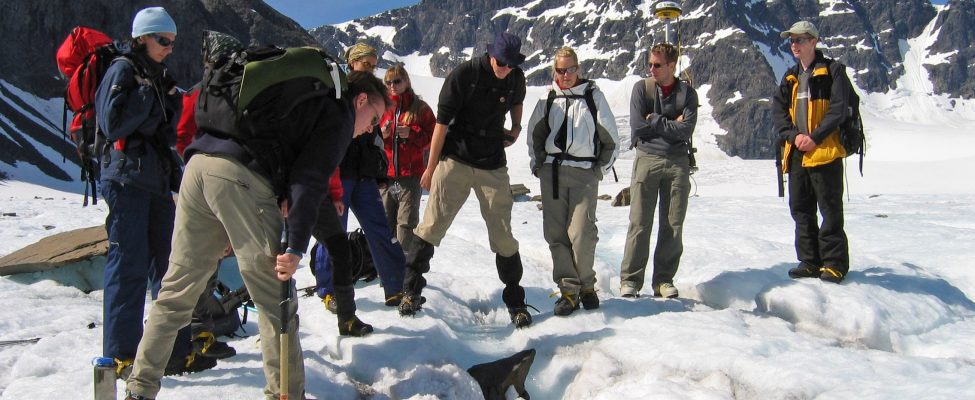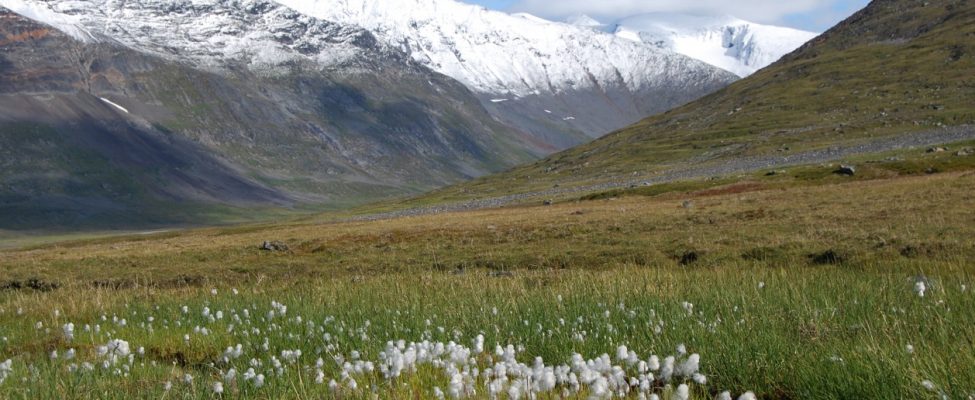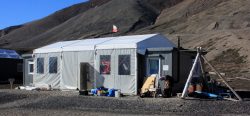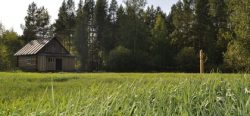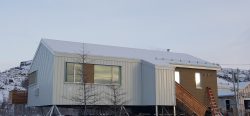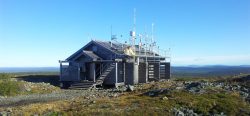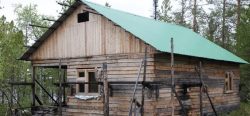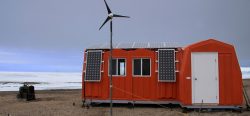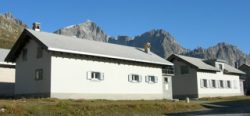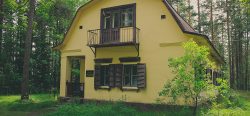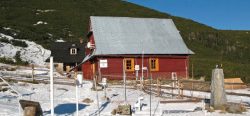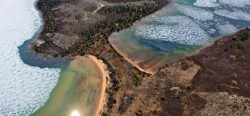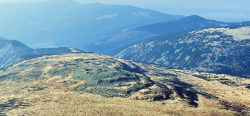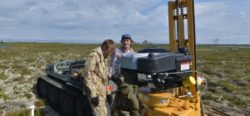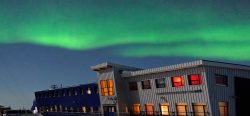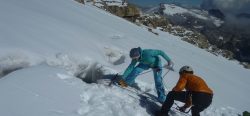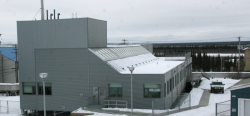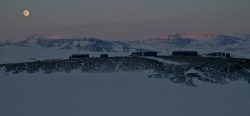Contact Details
Institutionen för naturgeografi
Stockholms Universitet
106 91 Stockholm
Sweden
Nina Kirchner
TA/RA contacts:
Nina Kirchner
Per Holmlund
Other contacts:
Per Holmlund
Annika Granebeck
- Phone: Tarfala +46 72 715 50 39 Nina Kirchner +46 8 16 2988
- Email: tarfala@natgeo.su.se
- Link: http://www.natgeo.su.se/tarfala-forskningsstation
Twitter @NKirchnerSthlm
Facebook @TarfalaResearchStation
Webpage www.natgeo.su.se/tarfala-forskningsstation
STATION NAME AND OWNER
Tarfala Research Station is a centre for glaciological and alpine research at Stockholm University, Sweden, and hosted by the university’s Department of Physical GeographyThe study of the Earth, such as places, landforms, people and processes by which the Earth changes over time. Geography is divided into two main branches: human geography and physical... More.
LOCATION
Tarfala Research Station is located at 1130 m a.s.l. in the high-alpine Kebnekaise Mountains, northern Sweden. It is Sweden’s only research station in a high alpine arcticDefinitions of the Arctic vary according to environmental, geographical, political, cultural and scientific perspectives. Some scientists define the Arctic as areas having a high latitude, long winters, short, cool summers,... More environment surrounded by glaciers. The nearest settlement is the Sami village Nikkaluokta, 24 km southeast of the station. There is a mountain tourist station (STF Kebnekaise fjällstation) ca 7 km from TRS, and a tourist hut (STF Tarfalastuga) ca 1 km from TRS.
BIODIVERSITY AND NATURAL ENVIRONMENT
Tarfala Research Station is surrounded by Sweden’s highest mountains and several glaciers, and it is embedded in a time-machine like natural laboratory since climateThe average weather we would expect over a long period of time (seasons, years, decades). Climate varies from place-to-place across the Earth. Climate is determined by long-term (over at least... More warming is more pronounced in the ArcticDefinitions of the Arctic vary according to environmental, geographical, political, cultural and scientific perspectives. Some scientists define the Arctic as areas having a high latitude, long winters, short, cool summers,... More (“ArcticDefinitions of the Arctic vary according to environmental, geographical, political, cultural and scientific perspectives. Some scientists define the Arctic as areas having a high latitude, long winters, short, cool summers,... More Amplification”); this fuels a rapid decay of the small and vulnerable Swedish glaciers , and a rapid emergence of postglacial terrestrial and aquatic environments and associated changes in hydrological regimes and ecosystems can therefore be studied at and around TRS. Lake Tarfala, ca 1 km from TRS, is an exceptionally deep arcticDefinitions of the Arctic vary according to environmental, geographical, political, cultural and scientific perspectives. Some scientists define the Arctic as areas having a high latitude, long winters, short, cool summers,... More alpine lake (51 m) that is seasonally ice covered and dimictic. PermafrostPermafrost is frozen ground that remains at or below zero degrees Celsius (32 degrees Fahrenheit) for two or more years. It forms in regions where the mean annual temperature is... More in the area is patchy, and vegetation ranges from high-alpine floraThe plants that live in a particular region, habitat or time (such as geological period like the jurassic). For animals, we use the term fauna, and to collectively refer to all... More to mountain birch forest at the tree-line.
HISTORY AND FACILITIES
TRS was officially inaugurated in 1961 as an infrastructure for research in glaciologyThe study of glaciers. More and geomorphology at STockholm University. Today, TRS is led by the director Nina Kirchner together with the vice-director Per Holmlund and the interim operative station manager Annika Granebeck. The TRS team is complemented by the research engineer Jamie Barnett and a seasonal drift technician. During the summer season, the TRS team is also complemented by field assistants and kitchen staff. TRS also has a board and an external science advisory group.
TRS is usually open from the end of March to the beginning of May, and from the end of June to mid- September. All outdoor activities, including transport to and from the station, are dependent on variable mountain weather. It is therefore recommended that you include extra time in your stay to allow for periods when fieldwork and/or transport may not be feasible. TRS can accommodate up to 28 guests at a time, in 2- and 4-person bedrooms in houses with running water and dry and/or incineration toilets.
All meals are included – breakfast and dinner are served in the galley, lunch is usually a packed lunch for all heading into the field. There is no possibilities for self catering. TSR has two showers in the service building, where also the sauna is located. Tarfalajokk runs by the service house, providing refreshing cold water between sauna rounds. TRS has a modern lecture hall seating ca. 30 persons, a mechanical workshop and a simple wet-laboratory. Please contact the station manager if you want to use the workshop and/or the laboratory. Mobile phone reception is unreliable around Tarfala, but usually works relatively well in the Tarfala valley if you use the operators Telia or Tele2.
TRS location in an ArcticDefinitions of the Arctic vary according to environmental, geographical, political, cultural and scientific perspectives. Some scientists define the Arctic as areas having a high latitude, long winters, short, cool summers,... More and alpine setting far from the nearest road and medical assistance, imposes particular requirements when it comes to safety, both during fieldwork and at the station. We therefore have safety and etiquette rules which shall be followed by everyone at the station, both staff and visitors, so that we together can experience our beautiful work place in a safe and enjoyable way.
Our safety regulations are based on recommendations from the Swedish Consumer Agency (a government agency whose task it is to safeguard consumer interests) and have been produced in collaboration with representative from the Swedish Mountain Rescue.
GENERAL RESEARCH AND DATABASES
TRS is Sweden’s only research station located in an alpine arcticDefinitions of the Arctic vary according to environmental, geographical, political, cultural and scientific perspectives. Some scientists define the Arctic as areas having a high latitude, long winters, short, cool summers,... More environment surrounded by glaciers. Here we conduct high quality, internationally recognised scientific research on Swedish alpine and glacial environments. We do both disciplinary and interdisciplinary research, with links to the effects of climate changeAccording to the United Nations Framework Convention on Climate Change, climate change is change in the climate of the whole Earth or a region of the Earth that is believed... More on the global cryospherePlaces on earth where water is in its solid form, frozen into ice or snow. This includes polar regions but also high altitude areas (high mountains). In a region's winter,... More and with focus on Swedish glaciers. Long term observations of watercourses and ecosystems are also carried out alongside long term observations of the changing state of glaciers. The data is made available with open-access through different databases. TRS is also a platform for field-based teaching, which is available for both international and national students and teachers. TRS also collaborates with non-academic actors who are active in the unique environment around the station, and communicates relevant research results to a wide range of target groups. We welcome researchers and academic courses from various subject areas and universities, academic workshops and meetings!
An important component of the research conducted at TRS is the continually measurement of Storglaciären’s mass balanceThe difference between the amount of ice a glacier gains in winter and the amount lost in summer. A glacier which is gaining mass has a positive mass balance: more ice is... More which has been ongoing since 1946, and is included in the World GlacierA glacier is a large, persistent body of land-based ice that forms over many years where the accumulation of snow is greater than its loss (ablation). The ice in a... More Monitoring Service’s database. The mass balanceThe difference between the amount of ice a glacier gains in winter and the amount lost in summer. A glacier which is gaining mass has a positive mass balance: more ice is... More dataset from Storglaciären is the longest of its kind in the World and engages both the general public and researchers across the globe. The measurements have helped shape a comprehensive knowledge of the interaction between the glacierA glacier is a large, persistent body of land-based ice that forms over many years where the accumulation of snow is greater than its loss (ablation). The ice in a... More and climateThe average weather we would expect over a long period of time (seasons, years, decades). Climate varies from place-to-place across the Earth. Climate is determined by long-term (over at least... More, local temperatures and precipitation changes, which together play an important role in our understanding of glacierA glacier is a large, persistent body of land-based ice that forms over many years where the accumulation of snow is greater than its loss (ablation). The ice in a... More dynamics.
TRS is also responsible for measuring the annual height of Kebnekaise’s southern peak, which determines the highest point in Sweden and thus generates great public interest. On 14 August 2021, the southern peak of Kebnekaise was measured at 2,094.6 meters, which was lower than the northern peak (2097 m). It is the lowest altitude that has been measured since the measurements started in 1902.
HUMAN DIMENSION
The nearest village is Nikkaluokta, inhabited by c. 30, mainly Sami people.
ACCESS
Travel to TRS is recommend to go via Kiruna and Nikkaluokta. Kiruna is served by train and plane from Stockholm. Nikkaluokta is served by bus from Kiruna (c 60 km). From Nikkaluokta, TRS is reached by a 24 km long trail hike (summer), or by skies or snowmobile (winter). Helicopters operate from Nikkaluokta during high season, and from Kiruna during low season. At TRS we strive to minimise our carbon footprint by choosing the most climateThe average weather we would expect over a long period of time (seasons, years, decades). Climate varies from place-to-place across the Earth. Climate is determined by long-term (over at least... More friendly modes of transportation to and from the station.
